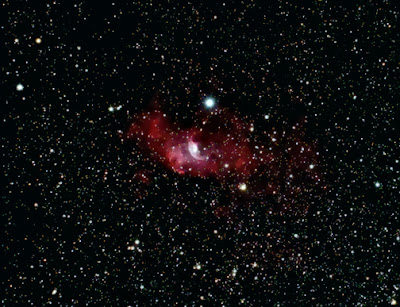
Let me compress a long, eight months old story about the image above into a short one.
In July 2007 I ordered a Tak 180E and a SBIG 2000XCM to go with it from OPT. The Tak to SBIG adapter that OPT sent was, as my first trial run revealed, perfectly suited to any SBIG with a filter wheel. But not to the one shot color XCM. Focus was impossible to achieve. As any imager knows, when you run into problems like this, you’ll soon discover that you’re about to burn up some major time. I was less than pleased. :(
After several conversations with OPT staff, I contacted the owner, Craig Weatherwax. Craig made things happen – albeit with another cash ante from moi. OPT contacted Texas Nautical, the Tak dealer. Texas Nautical ultimately came up with the appropriate SBIG adapter. (Of course I now have a nearly $200 "extra" adapter that OPT is not interested in accepting.)
A clear night finally arrived (March 11), albeit one with an early rising, nearly full moon. After a quick and, as it turns out, imperfect focus run, I zipped over to M42 and ran a sequence of roughly 75 by 20 second unguided images of M42. The results were not picture perfect, given the soft focus and the marginal framing. But I can see the light at the end of the tunnel.
One conclusion: the Tak is amazingly fast!
Max










